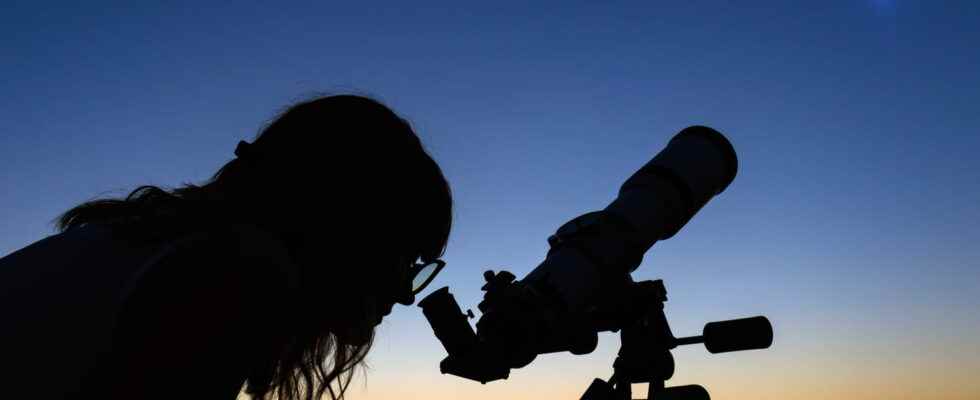CONJUNCTON VENUS-NEPTUNE. The planets Venus and Neptune meet in the night sky until February 16, 2023. Here are some explanations of the conjunction phenomenon and tips for successful observation.
[Mis à jour le 16 février 2023 à 07h00] Until Thursday, February 16, astronomy enthusiasts can witness the conjunction of two planets very far from the solar system: Venus and Neptune. Although several billion kilometers separate them, observed from Earth, the so-called Evening Star and the most distant gaseous planet in the solar system appear side by side in the sky, giving the impression of a heavenly encounter.
Without being rare, this conjunction remains a fascinating spectacle if you like space. This is also the time to observe the planet Neptune that we have little opportunity to admire as it is discreet in the sky. What equipment to use to not miss anything of the event? How to spot the conjunction in the night sky? We tell you all about the celestial ballet that awaits you!
When will the Venus-Neptune conjunction occur?
To admire the Venus-Neptune conjunction, meet at 7:15 p.m. (Paris time). This event therefore takes place at the beginning of the night just after sunset. sun. The rapprochement between the two planets is visible for about an hour after nightfall before the two stars disappear behind the horizon around 8:15 p.m.
What is the Venus-Neptune conjunction?
The conjunction of two planets is a phenomenon that occurs when these two stars come together in the sky when observed from a third object, usually the Earth. We then have the impression that the two planets are close to each other. But this rapprochement is only visual, since in reality the latter can be several billion kilometers from each other and appear side by side in the sky.
This phenomenon occurs relatively frequently but remains spectacular since it is an opportunity to admire the two stars simultaneously. Conjunctions can involve planets but also other celestial objects such as asteroids, moons or stars.
The conjunction involves two planets in the solar system: the bright Venus and the gas giant Neptune. The two stars are thus visible very close to each other for about an hour in the evening sky.
What is the distance between Venus and Neptune?
Although Venus and Neptune appear side by side at conjunction, these two planets are extremely far apart. Indeed, despite appearances, Venus and Neptune are far from being neighbors in the solar system. Venus is the second closest planet to the Sun while Neptune is the furthest planet from our star, more than 4.5 billion kilometers from it. Thus, the distance that really separates the two planets is about 4.4 billion kilometers on average.
To observe the event, you will need to bring an optical device such as a telescope, a telescope or even a simple pair of binoculars. Ideally, place yourself in an open place where you can see the horizon because the two planets will not rise very high in the sky.
Start by locating the planet Venus which is located in the constellation of Aquarius. Also called “Berger’s Star”, it is the brightest star in the night sky after the Moon. You can use an application like Sky Tonight or an online sky map like the one on the site Stelvision to identify it with certainty. Once you have found Venus, you can search for Neptune, a bluish star that should be near it.
Do not wait too long to observe the sky once the sun has set. The two planets remain only one hour above the horizon. Prepare your observation to take advantage of the event!
